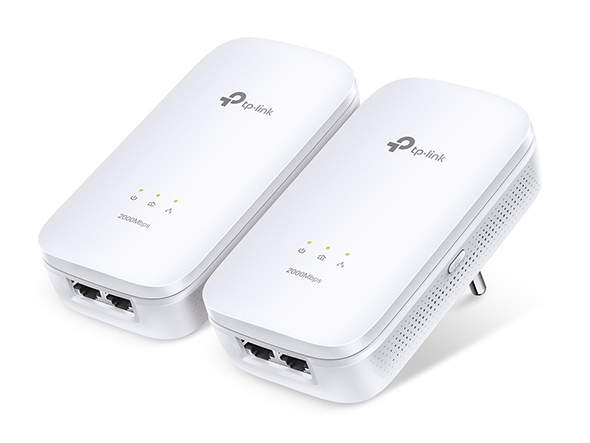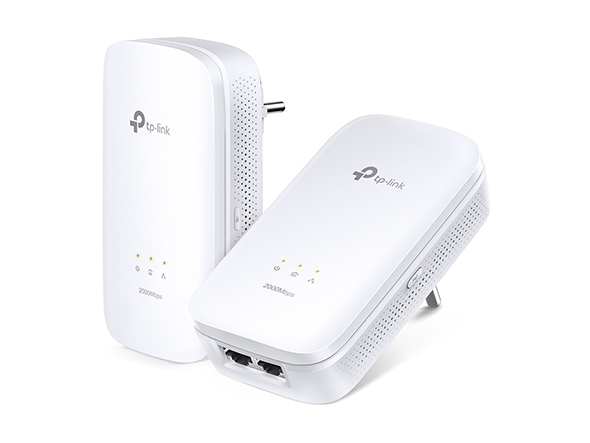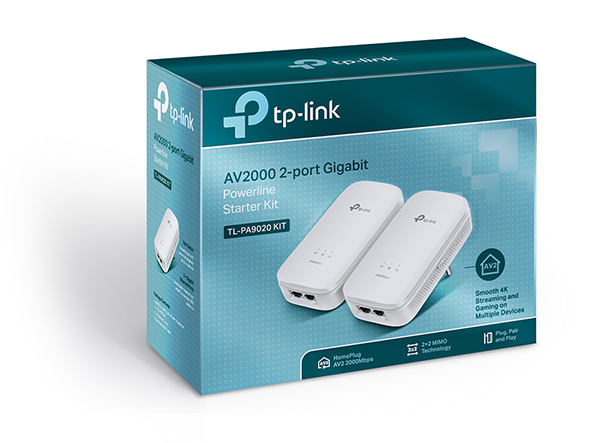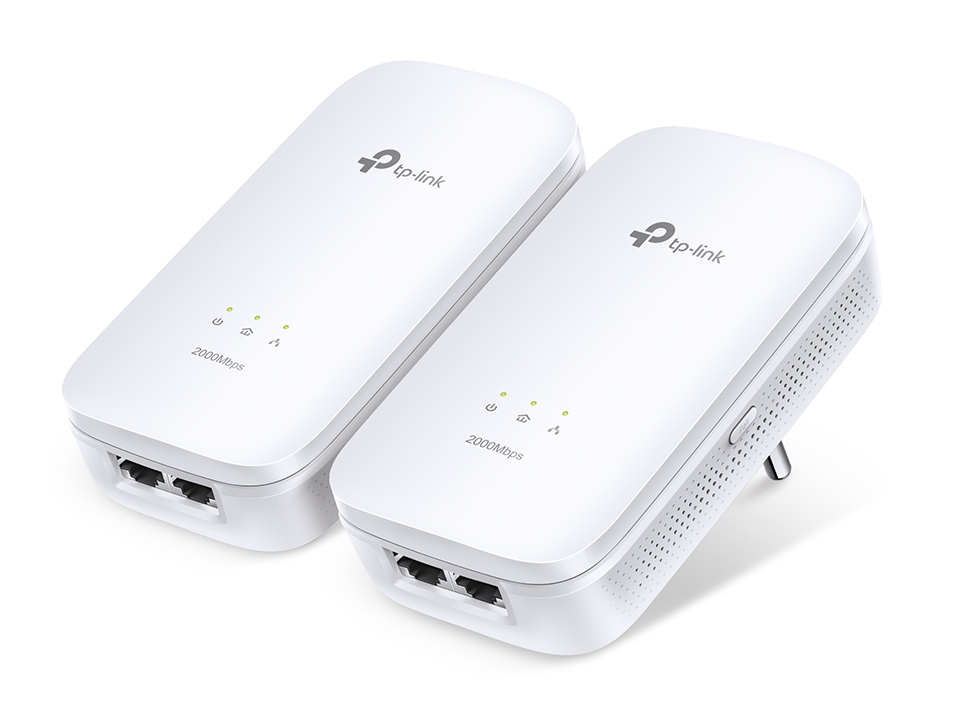TL-PA9020 KIT
End of LifeAV2000 2-port Gigabit Powerline Starter Kit
- HomePlug AV2 standard compliant, high-speed data transfer rates of up to 2000Mbps1, supports all your online needs
- 2X2 MIMO with Beamforming establishes multiple simultaneous connections for you to enjoy higher powerline speeds and greater stability
- 2 gigabit ports create secure wired networks for desktops, smart TVs or games consoles
- Plug and play, no configuration required
- Patented Power-Saving Mode automatically reduces power consumption by up to 85%2
| HARDWARE FEATURES | |
|---|---|
| Transmission Speeds | Powerline: up to 2000 MbpsEthernet: 10/100/1000 Mbps |
| Standards and Protocols | HomePlug AV2, HomePlug AV, IEEE 1901,IEEE 802.3, IEEE 802.3u, IEEE 802.3ab |
| Compatibility | Compatible with all AV2000, AV1200, AV1000, AV600, AV500 &AV200 powerline adapters |
| Plug Type | EU, UK, US |
| Interface | 2 * Gigabit Ethernet Port |
| Button | Pair |
| Power Consumption | Maximum: 5.8 W (230V/50Hz)Standby: 0.5 W (230V/50Hz) |
| LED Indicator | Power, Powerline, Ethernet |
| Dimensions ( W x D x H ) | 4.85*2.68*1.18 in. (123*68*30 mm) |
| Range | Up to 300 meters/1000 feet over existing electrical wiring |
| SOFTWARE FEATURES | |
|---|---|
| Quality of Service | ToSSupports up to 4-level type QoSSupport up to 8-level VLAN priority |
| Security | 128-bit AES Encryption |
| OTHERS | |
|---|---|
| Certification | CE, FCC, RoHS |
| Package Contents | AV2000 2-port Gigabit Powerline Adapter, TL-PA9020 * 22-meter RJ-45 Ethernet Cable * 2Quick Installation Guide |
| System Requirements | Windows 8.1/8/7/Vista/XP, Mac OS, Linux |
| Environment | Operating Temperature: 0°C~40°C (32°F~104°F)Storage Temperature: -40℃~70℃ (-40℉ ~158℉)Operating Humidity: 10%~90% non-condensingStorage Humidity: 5%~90% non-condensing |
† Maximum wireless signal rates are the physical rates derived from IEEE Standard 802.11 specifications. Range, coverage, and the maximum number of connected devices are based on test results under normal usage conditions. Actual wireless data throughput, wireless coverage, and number of connected devices are not guaranteed and will vary as a result of 1) environmental factors, including building materials, physical objects, and obstacles, 2) network conditions, including local interference, volume and density of traffic, product location, network complexity, and network overhead, and 3) client limitations, including rated performance, location, connection quality, and client condition.








